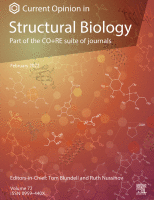Current Opinion in Structural Biology
Volume 73, April 2022, 102343
https://doi.org/10.1016/j.sbi.2022.102343
Abstract

In most cases, protein aggregation stems from the establishment of non-native intermolecular contacts. The formation of insoluble protein aggregates is associated with many human diseases and is a major bottleneck for the industrial production of protein-based therapeutics. Strikingly, fibrillar aggregates are naturally exploited for structural scaffolding or to generate molecular switches and can be artificially engineered to build up multi-functional nanomaterials. Thus, there is a high interest in rationalizing and forecasting protein aggregation. Here, we review the available computational toolbox to predict protein aggregation propensities, identify sequential or structural aggregation-prone regions, evaluate the impact of mutations on aggregation or recognize prion-like domains. We discuss the strengths and limitations of these algorithms and how they can evolve in the next future.
